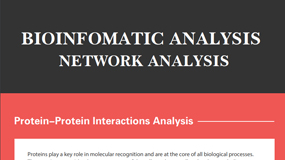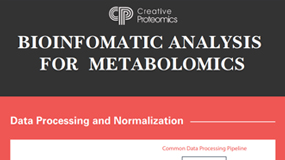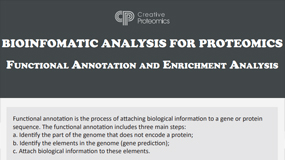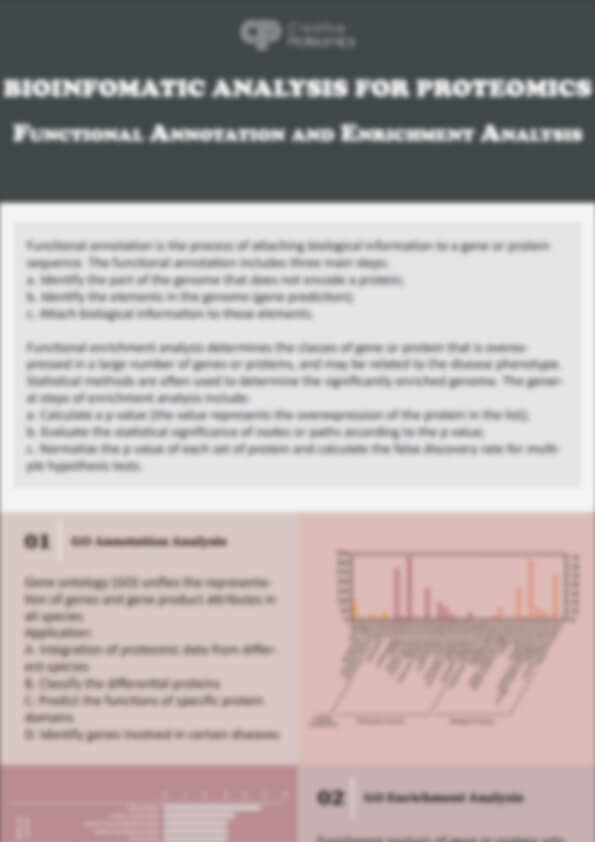Development And Advancement Of Proteomics Bioinformatics
Proteins govern most biological processes and functions. Recently, much attention has been paid to study the entire protein sets available in a cell. The term "proteome", a portmanteau of protein and genome, was coined by Marc Wilkins in 1994 and broadly defined as the total set of proteins that could be expressed in a sample or organism at a given time or the set of proteins that can be detected by some method. This varies with time and distinct requirements, or stresses. The related term "proteomics" was originally coined by Marc Wilkins and colleagues and is now widely identified as one of the omics- the set of post-genomic technologies which seek to further understand the genome in the molecules it encodes, their functions, interactions and connected properties.
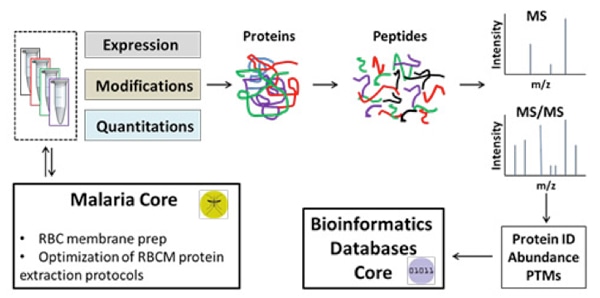
Proteomics is an interdisciplinary domain which has benefited a lot from the genetic information of the Human Genome Project (HGP); it is also arising scientific research and exploration of proteomes from the complete level of intracellular protein composition, structure, and its own singular activity patterns. It is a valuable component of functional genomics. Proteomics research involves the separation, identification, qualitative, quantitative, and functional characterization of the entire protein profile of a given cell, tissue, and/or organism. Studying proteome also includes the profiling of isoforms, mutants, post-translational modifications, splice variants and protein-protein interactions.
Due to the holistic nature of proteomics research that delves into protein-level investigations, the resultant data exhibits a characteristic of high information content. In order to efficiently and rapidly analyze research data, the field of bioinformatics emerged, revolving around proteomics inquiries.
Bioinformatics, an emerging interdisciplinary field, evolved alongside the Human Genome Project. It encompasses all facets of biological information including acquisition, processing, storage, dissemination, analysis, and interpretation. By amalgamating mathematical, computational, and biological tools, it aims to elucidate and comprehend the biological significance encapsulated within voluminous data.
The application of bioinformatics in proteomics progresses in alignment with the diverse strategies, subjects, and methodologies employed in proteomics research, necessitating varied software and tools for data mining, processing, and analysis.
In the context of proteomics, the application of bioinformatics extends to mass spectrometry data processing. Mass spectrometry has become a cornerstone in proteomics research and a primary means for protein identification and analysis. A single mass spectrometer can generate millions of spectra within days. Coping with such vast information requires efficient, user-friendly software tools for spectrum data collection, storage, searching, identification, and analysis.
Missions of Proteomics Bioinformatics
Proteomics informatics undertakes multifaceted tasks within the realm of proteomics research:
Deconstruction of Massive Proteomics Data: It encompasses the parsing and analysis of voluminous proteomics data obtained through protein electrophoresis and mass spectrometry.
Construction of Diverse Proteomics Databases: It involves the establishment of comprehensive proteomics databases sourced from a wide array of organisms, tissues, and disease states, encompassing various species origins.
Prediction of Physicochemical Attributes: It anticipates the physicochemical attributes of specific proteins, potential post-translational modifications, and prospective 3D structures.
Interpretation of Biological Significance: It delves into the biological implications of outcomes derived from proteomics investigations, elucidating their relevance within specific cellular signaling pathways or disease contexts.
Our bioinformatics services in proteomics research encompass but are not limited to:
Protein Sequence and Structural Bioinformatics:
Through large-scale separation and identification of proteins within an organism, protein sequence information is obtained. Utilizing proteomics informatics databases, structural information can be inferred by sequence alignment, thereby enabling the deduction of protein functionality or the identification of novel protein family members.
Post-Translational Modifications and Bioinformatics:
Post-translational modifications (PTMs) constitute a crucial area in biology, referring to the chemical changes proteins undergo after synthesis. These modifications can alter protein function, localization, and interactions, impacting various cellular processes. Bioinformatics employs computational techniques and big data analysis to identify, predict, and interpret protein PTMs. For instance, predictive algorithms can anticipate potential modification sites, guiding experimental design. Additionally, bioinformatics integrates diverse databases and resources, furnishing researchers with comprehensive modification information to expedite research. Moreover, bioinformatics contributes to understanding the functional and regulatory networks of PTMs. Constructing protein interaction networks and signaling pathways, it reveals interactions between modification sites and other proteins, enhancing our comprehension of cellular mechanisms. This systematic analysis unveils intricate modification networks, advancing our understanding of cellular regulation.
Protein-Protein Interaction Bioinformatics:
In cells, interactions between proteins, as well as interactions between proteins and DNA, RNA, small molecules, and even metal ions, are indispensable for information transmission and metabolic processes. Research encompasses protein interaction networks, methodologies for studying protein interactions, and simulations of protein interactions.
Functional Proteomics Bioinformatics:
Classifying proteins based on their functions—such as receptor proteins, enzyme proteins, signaling pathway proteins, structural proteins, and regulatory proteins—can be achieved. Highly homologous protein sequences might share similar functions. Proteins with significant sequence information correlation and conserved structural domains may also harbor comparable functions.
Proteomic Genetic Bioinformatics:
The study of genetic information characteristics within the same class of proteomes and its relation to protein expression is crucial for unveiling life phenomena and principles. Proteomic genetic information plays a pivotal role in molecular evolution and molecular genetics.
Our Bioinformatics platform for Proteomics
With years' experience in advanced experiment equipments, Creative Proteomics can provide the following bioinformatics services in proteomics:
Functional annotation and enrichment analysis
Proteomic analysis of post-translational modifications
Standard analysis pipeline for identified proteins by MS/NMR results:
Functional annotation (GO, KEGG, COG)
Statistical analysis (volcano plot, veen plot, etc.)
Enrichment analysis (GO, KEGG)
Clustering analysis
Protein-protein interactions analysis
How to place an order

*If your organization requires signing of a confidentiality agreement, please contact us by email
Creative Proteomics provide our customers first-class proteomics bioinformatics services using multiple classic bioinformatics technologies. We hope you will find that we can meet your research needs. Please feel free to Contact Us to discuss the wide range of bioinformatics services we can perform.





